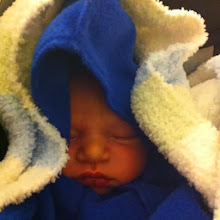 |
| From First weeks at Agahozo Shalom |
Muraho! Hello from Agahozo Shalom Youth Village (ASYV) in Rwanda! On Tuesday afternoon I arrived safely in Rwanda from St. Louis via New York, London, and Nairobi.
About an hour out of Kigali, Rwanda's capital city, we turned off the main road and on to a bumpy dirt one that wound through the hills. Jean Bosco, ASYV's driver, drove Andrew, Benna, Sarah, and me (together the Americans of the village) past homes hidden behind leafy green trees and children playing. Our new home, Agahozo Shalom Youth Village, is more beautiful than I could have imagined. In the center of the village is a large dining hall, soon to be joined by the chapel and library (next in the construction plans). On the hill below are the homes- orange, green, and yellow buildings that will soon house the first class of 125 students. At the highest point of the village, symbolizing that one can always reach higher in learning, is the school. From every point there is a breathtaking view- hill after hill rolling into the horizon, with a shining lake in the center. Just like at Yemin Orde in Israel, at ASYV one can always see far, so that one can go far.
Counselors, house mothers, cooks, security guards, construction workers, landscapers, Israeli and American volunteers (there are seven of us), and many other staff are busy getting the village ready for the arrival of 125 children on Monday. My head is already overflowing with ideas for art projects to do with the kids, and I can't wait to get started. But even with the busy days, we have made time to enjoy freshly cooked meals of cassava, rice, beans, and vegetables. Our kitchen is made of a large store room of vegetables and a few outdoor fire pits, but the food is great. And these chefs certainly know the most about kosher cooking in this part of the world! They have made is quite easy for me to feel very comfortable here and are interested in learning more about why I practice religion the way I do, as many of them are very religious themselves.
Throughout the week, we have been busy with inspirational training sessions by Anne Heyman, founder of ASYV, and other staff leaders. I led one session on leadership, and in a discussion about role models I was shocked to hear personal accounts of the genocide that almost all of the counselors and house mothers experienced. Most notable and difficult to understand is the desire to forgive. It is something that I hope to continue to explore.
And of course, I cannot forget the Rwandan dancing. Dancing has always been my favorite way to integrate into a new culture and this is no exception. Last night I joined the Rwandan counselors in their traditional dancing- strong, graceful arm movements and steady rhythmic steps. The shining smiles on everyone's faces as we danced together to clapping, singing, and cheering, showed that we are a team, and together we are a part of something amazing. Every person here, whether Rwandan, Israeli, or American, has the sincere desire to create a place that will give Rwandan children hope, skills, strength, and a promising future. And in just a few days… it begins!





















